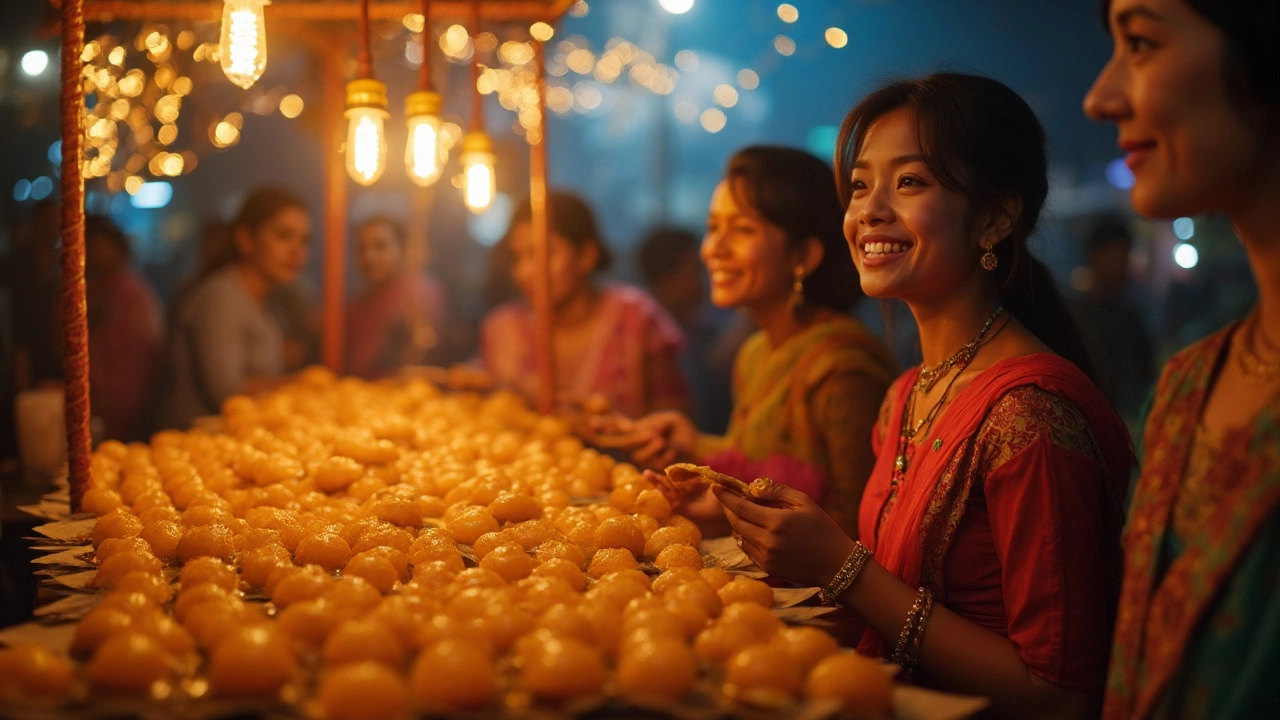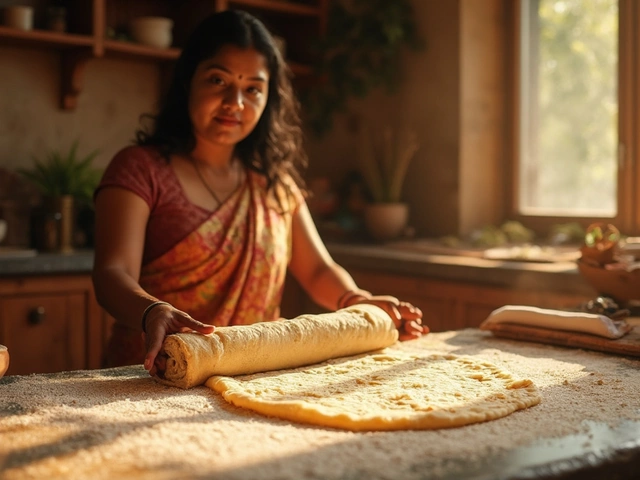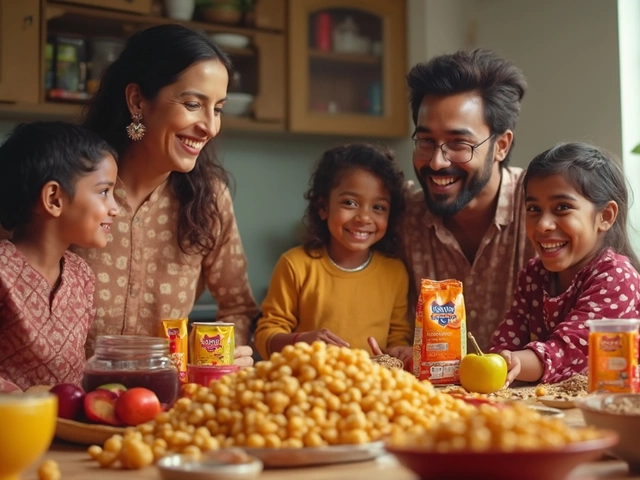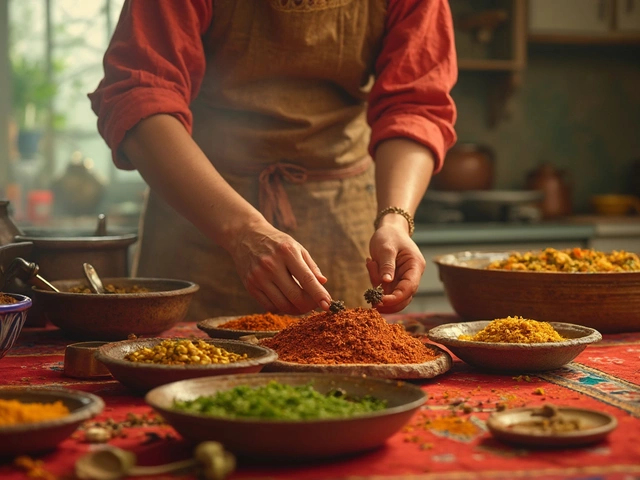You ask almost anyone in India what dessert they crave after a big meal, and the answer’s probably ‘gulab jamun.’ These soft, syrup-soaked balls pop up at birthday parties, weddings, family dinners, and honestly, every celebration you can think of. There’s a reason even folks who claim they ‘don’t have a sweet tooth’ end up grabbing a gulab jamun or two off the tray.
But what makes this humble dessert everyone’s favorite? It’s not just the taste—though, let’s be real, it’s hard to beat that warm, slightly chewy, melt-in-the-mouth bite. Gulab jamun is super easy to find, whether you’re walking through a busy market or grabbing food at a dhaba on the highway. Plus, making a batch at home only takes a handful of simple ingredients and a little patience. Don’t worry, you don’t need to be a master chef to get them right (and yes, I’ll share the tricks people swear by for that perfect texture).
Ready to get to the bottom of why gulab jamun wins every popularity contest? Buckle up for some unexpected tips, cool facts, and a few mistakes to dodge if you want your kitchen to smell better than your favorite sweet shop!
- The Unstoppable Popularity of Gulab Jamun
- A Quick History: Where Did It Come From?
- What Makes Gulab Jamun Irresistible?
- Tips For Home Cooks: Secrets to Perfect Gulab Jamun
- Variations Across India
- Trying Other Favorites: Jalebi, Rasgulla, and Beyond
The Unstoppable Popularity of Gulab Jamun
Across India, no other sweet comes close to the fame of gulab jamun. Walk into any bakery or mithai shop—this dessert always gets a prime spot in the glass case. It’s not just tradition; it’s a matter of pure demand. In fact, some surveys over the years have pegged gulab jamun as the top pick during big festivals like Diwali and Eid. That’s wild, considering India’s massive variety of sweets.
Part of the magic? You’ll spot gulab jamun at upscale hotels’ fancy buffets and at tiny roadside stalls. It doesn’t matter which region you’re in—north, south, east, or west, everyone recognizes these syrupy brown balls. Even in Indian restaurants outside the country, gulab jamun is almost always on the menu, making it a comfort food for the homesick and a must-try for curious visitors.
The reason for its popularity goes beyond just taste. It hits all the marks for what people want from a dessert: soft, not too heavy, and sweet—but not in a way that’s overwhelming. The shelf life is decent too, especially when kept chilled, so it’s super practical for big gatherings. That’s why caterers love it, and why you’ll see it turning up at every big wedding or family reunion.
Another big plus: gulab jamun is pretty forgiving. Even if your first attempt at making it isn’t perfect, folks will still be reaching for seconds. There’s this shared nostalgia too—most people have some memory tied to eating it as a kid, which makes it a safe, crowd-pleasing bet every single time.
A Quick History: Where Did It Come From?
Most people don’t realize it, but gulab jamun didn’t actually start out as an Indian creation. This India desserts superstar actually traces its roots back to Persia (modern-day Iran). The original treat—called luqmat al-qadi—was a little fried dough ball dunked in honey. It was brought to India by the Mughal emperors, who made it part of their royal feasts, and local chefs put their twist on it.
The name "gulab jamun" itself tells the story. "Gulab" means rosewater in Persian, and "jamun" is a reference to a dark purple Indian fruit that the sweet kind of looks like. The basic recipe hasn’t changed much since the Mughal days: dough made from khoya (milk solids) or milk powder, rolled into balls, deep-fried, and then soaked in sugar syrup flavored with cardamom and rosewater.
Today, gulab jamun is totally woven into India’s food culture. You’ll find it everywhere, no matter what state you visit. It’s not just for festivals and weddings, but a “must” on restaurant menus and sweet shops any day of the year.
| Origin | Year Introduced in India | Main Ingredients | Where Is It Popular? |
|---|---|---|---|
| Persia (Iran) | Late 16th Century | Khoya or Milk Powder, Flour, Sugar, Ghee, Cardamom, Rosewater | All Indian states, Pakistan, Bangladesh, Nepal |
Funny enough, gulab jamun fits right into the Indian sweet tradition but always stands out as a classic. It’s kind of like the “birthday cake” of Indian celebrations—expected, reliable, totally worth the calories, and there’s always a reason for one more bite.
What Makes Gulab Jamun Irresistible?
If you’re wondering why gulab jamun sits right at the top among Indian desserts, it’s all about texture, flavor, and that instant comfort you get with every bite. The outer layer is just firm enough to hold together, but the inside is fluffy and airy. Once it soaks up all that cardamom-infused sugar syrup, you get a bite that’s both rich and melt-in-your-mouth. It’s that combo of chewy, soft, and syrupy that has people hooked.
What’s wild is how simple the ingredients are. Most recipes call for khoya (milk solids), a bit of flour, ghee, and of course, sugar and spice. Nothing fancy—just pantry basics turned into pure magic. There’s even a version for those who don’t want to make khoya from scratch; you can use milk powder. The fun part is you really don’t need a bunch of equipment or hard-to-find stuff.
- India desserts like gulab jamun are designed for sharing, which makes them the life of every gathering.
- It hits that perfect sweet spot: not bland, but also not sugar-overload (at least, by Indian sweet standards).
- Anyone can make it—even first-timers usually get good results because the process is pretty forgiving.
Need some numbers? Check out how gulab jamun stacks up at big events—according to a 2023 catering survey in Mumbai, it beat out rasgulla and jalebi by a huge margin when people were asked about their must-have dessert.
| Dessert | Preferred at Events (%) |
|---|---|
| Gulab Jamun | 68 |
| Jalebi | 19 |
| Rasgulla | 9 |
| Others | 4 |
Another trick to its popularity? It’s cozy both hot and cold. Some folks reach for it right out of the fridge, while others love it steaming, the syrup still bubbling. There’s no ‘right’ way, and that means everyone can have it just the way they love.
And if you’re worried about dietary needs, there’s even vegan and gluten-free takes on this classic. So yeah, gulab jamun’s got everyone covered.
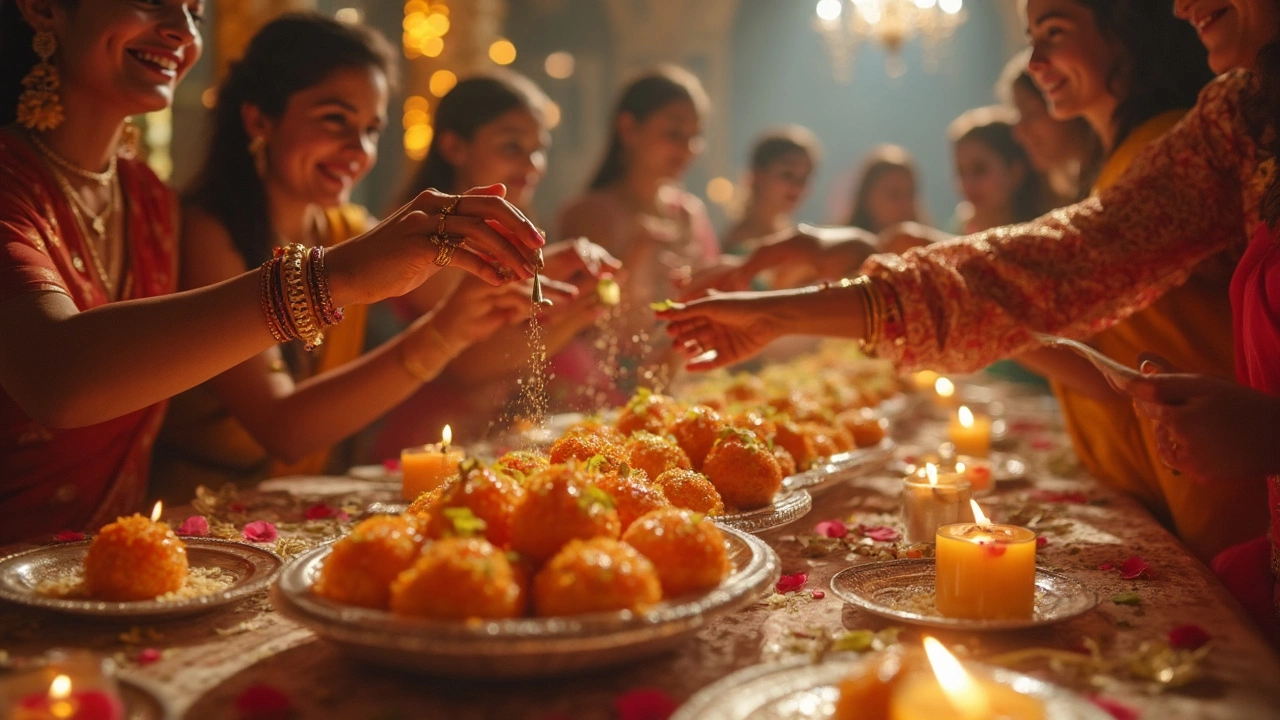
Tips For Home Cooks: Secrets to Perfect Gulab Jamun
Getting gulab jamun just right is all about the small details. Skip those, and you might end up with dense, rubbery balls or syrup that just doesn’t get soaked up. With a little care, though, you can serve dessert that’ll blow everyone away—even if it’s your first time trying.
Let’s break down the keys to making great gulab jamun at home:
- Pick the right base: The classic recipe uses khoya (dried milk solids). If you can’t find it, look for milk powder with very little added sugar and no extra flavors. Don’t use condensed milk; it makes the dough too sticky.
- Don’t overwork the dough: Just bring it together. Mixing until it’s super smooth means your jamuns get tough. Gently knead until the dough looks soft but not sticky.
- Size matters: Make small balls—think about the size of a big marble. They expand in the syrup, so don’t go big. Make sure there aren’t any cracks or the balls will break while frying.
- Oil at the right temp: This is huge. If your oil is too hot, gulab jamun will look done on the outside but stay raw in the middle. Medium-low heat is what you want. When you drop a ball into the oil, it should slowly start floating up with tiny bubbles.
- Syrup basics: One-string consistency is perfect. If you go thicker, your gulab jamun can’t soak up the syrup. Toss in a few crushed cardamom pods and a drop or two of rose water for that classic flavor.
- Soaking time: Once the jamuns are golden brown, let them rest in the warm (not hot) syrup. Don’t rush this step—they’ll turn pillowy soft as they sit. Give them at least two hours if you can resist eating them straight away.
One last tip: If your first batch doesn’t turn out as you hoped, don’t scrap the whole thing! People often fry gulab jamun at the wrong temperature on the first try. Just tweak the heat next time, and you’ll see the difference. With these tips, even beginners can nail down the classic taste and texture in their own kitchen.
Variations Across India
The love for gulab jamun stretches from Kashmir to Kerala, but each region adds its own spin. In northern cities like Delhi and Lucknow, the classic soft, brown version takes center stage—made with milk solids (khoya) and deep-fried until golden. But visit the east, and you’ll find much lighter gulab jamuns made from chhena (a type of fresh paneer). If you’re ever in Bengal, their “langcha” looks similar but sometimes gets a stuffing of dry fruits inside.
Some places dial up the richness. Down south, especially during Diwali, you might spot ‘dry’ gulab jamun where the syrup is drained off after soaking, and the sweet is served plain or rolled in powdered sugar. In Maharashtra, festival platters usually come with elongated, slightly firmer jamuns known as “Kala Jamun.” These are fried even longer for a deep black color and a slightly chewy texture inside.
Here’s a quick look at how different states make this dessert their own:
- North India: Soft, light-brown gulab jamuns loaded with cardamom.
- Bengal: Lighter, cottage cheese-based jamun or stuffed “langcha.”
- Maharashtra: Dark, dense “Kala Jamun” that’s a little tangy.
- South India: Syrup-drained “dry” gulab jamun, especially for festivals.
- Gujarat: Jamuns with a hint of rose water and sometimes saffron for an aroma punch.
Even the syrup gets tweaked. Some regions go heavy on rose or cardamom, while others swap in saffron or even a splash of kewra water. A few sweet shops have gotten creative—think chocolate-filled gulab jamuns or ones spiked with a little alcohol for parties.
According to Chef Ranveer Brar, a major name in Indian cuisine,
"No matter where you travel in India, there's a version of gulab jamun waiting, and while the basics stay the same, it's the subtle changes that make each bite memorable."
Here’s a simple table to compare some of these mouth-watering differences:
| Region | Main Ingredient | Style | Special Touch |
|---|---|---|---|
| North India | Khoya | Classic, syrupy | Cardamom & Rose Water |
| Bengal | Chhena | Stuffed, lighter | Dry Fruit Filling |
| Maharashtra | Khoya | Kala Jamun, darker | Tangy with lemon juice |
| South India | Khoya/Instant mix | Dry style | Rolled in sugar |
| Gujarat | Khoya | Standard | Saffron aroma |
Hungry for a twist? Try swapping half the khoya for fresh paneer in your homemade batch. Or, throw in a few chopped pistachios for texture. The real secret is experimenting until you find your favorite mashup—just like they do across India.
Trying Other Favorites: Jalebi, Rasgulla, and Beyond
India's dessert scene isn’t just about gulab jamun. There’s a whole crew of sweets people line up for, and honestly, skipping them would be a crime. Jalebi and rasgulla are two big names, but every region has its own rockstar. Let’s break down what makes these treats unique and when you might see them on the table.
Jalebi stands out for its crazy shape and texture. It’s deep-fried, coiled like a little orange whirlpool, and then dunked straight into sugar syrup. Crunchy outside, juicy inside. You’ll find jalebi at almost every street food corner, especially hot in the morning alongside a cup of chai. Here’s a fun fact: Jalebi isn’t just Indian—it actually came here from the Middle East ages ago and quickly became everyone’s breakfast favorite.
Now, let’s talk rasgulla. This sweet is a trademark of Bengal and Odisha, and yes, people still argue about where it first popped up. Soft, spongy balls made from chenna (cottage cheese), boiled in sugar syrup, and served cold. If you’re tired of heavy desserts, rasgulla is light and seriously refreshing. And here’s the wild part—West Bengal's annual rasgulla production reportedly crosses over 6,000 tons! That tells you just how popular it is.
Wondering how these treats stack up compared to gulab jamun? Check out this quick comparison:
| SWEET | Origin | Main Ingredient | Texture | Typical Occasion |
|---|---|---|---|---|
| Gulab Jamun | All over India | Khoya (milk solids) | Soft, syrupy | Weddings, festivals |
| Jalebi | Persian/Indian fusion | Maida (flour) | Crispy, sticky | Breakfasts, street food |
| Rasgulla | Bengal, Odisha | Chenna | Spongy | Bengali festivals, gifts |
If you’re itching to try more, keep an eye out for:
- Rasmalai: Soft discs (like rasgulla’s cousin) soaked in sweet, cardamom-flavored milk. Super rich and a superstar at weddings.
- Soan Papdi: Flaky, it falls apart in your hand—think cotton candy, but nutty and loaded with ghee.
- Mysore Pak: Famous in South India, this chickpea flour fudge packs in a ton of ghee—perfect if you like your sweets on the heavier side.
Each sweet has its own vibe and hometown stories. But whether you’re after the crunchy punch of jalebi, the cool softness of rasgulla, or the richness of rasmalai, India’s dessert table is never boring. Don’t be shy: next time you spot a crowded sweet shop, just ask for their house favorite—you might find a new addiction.





